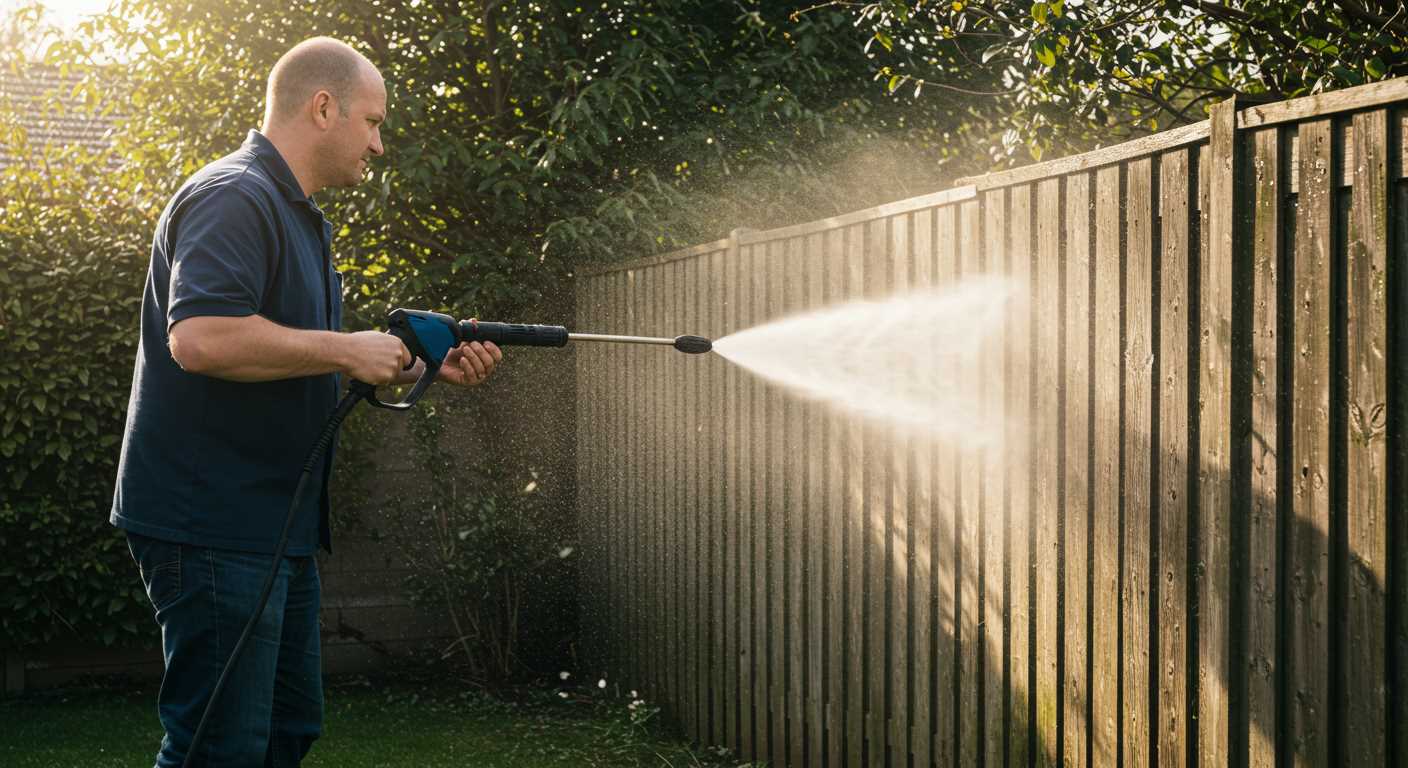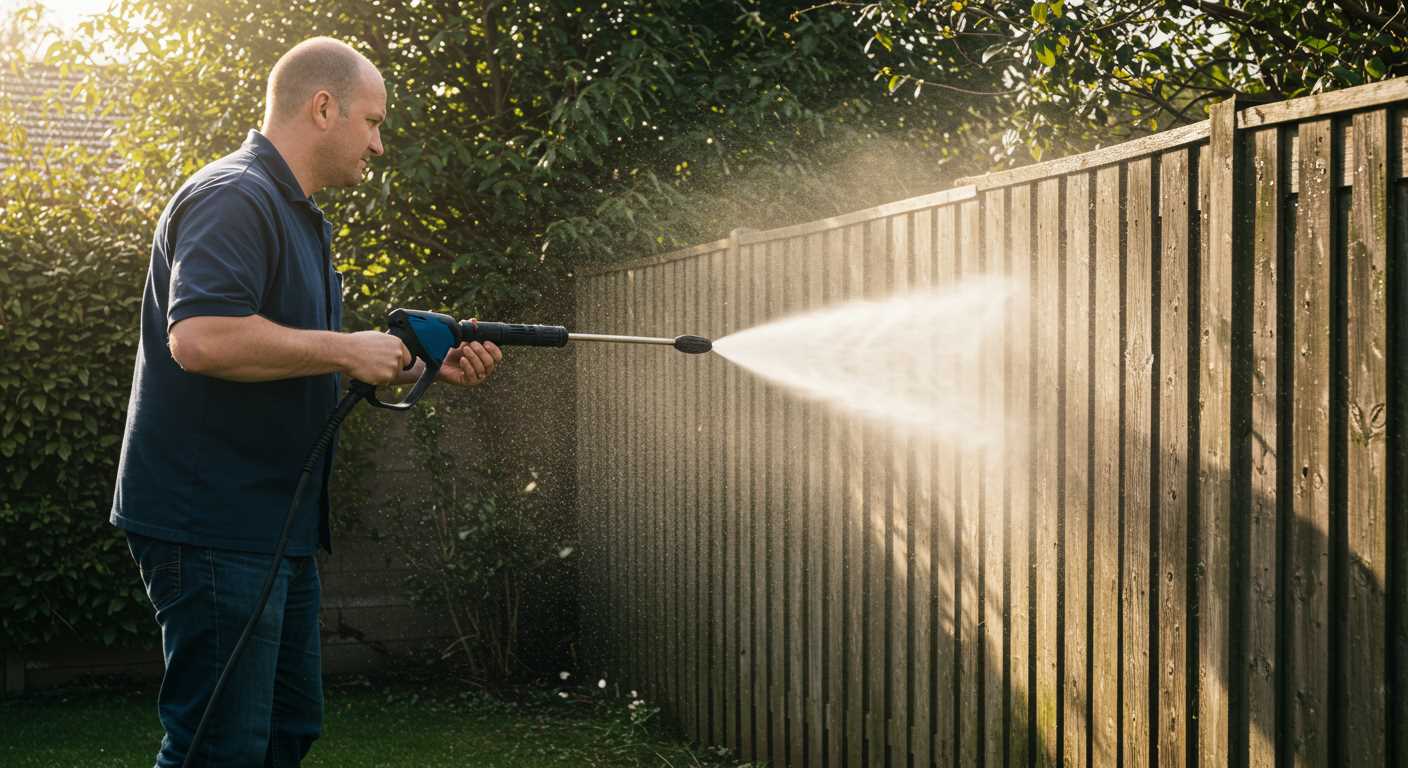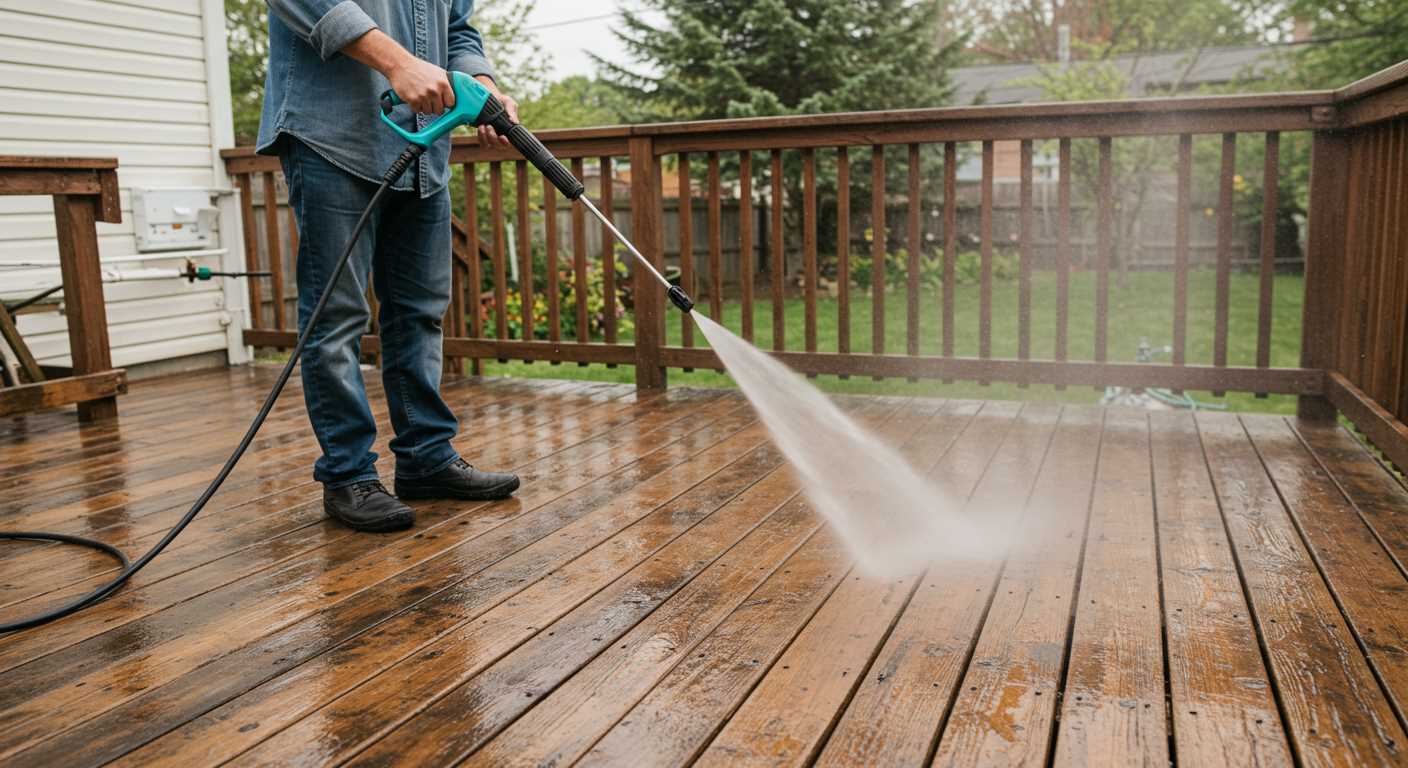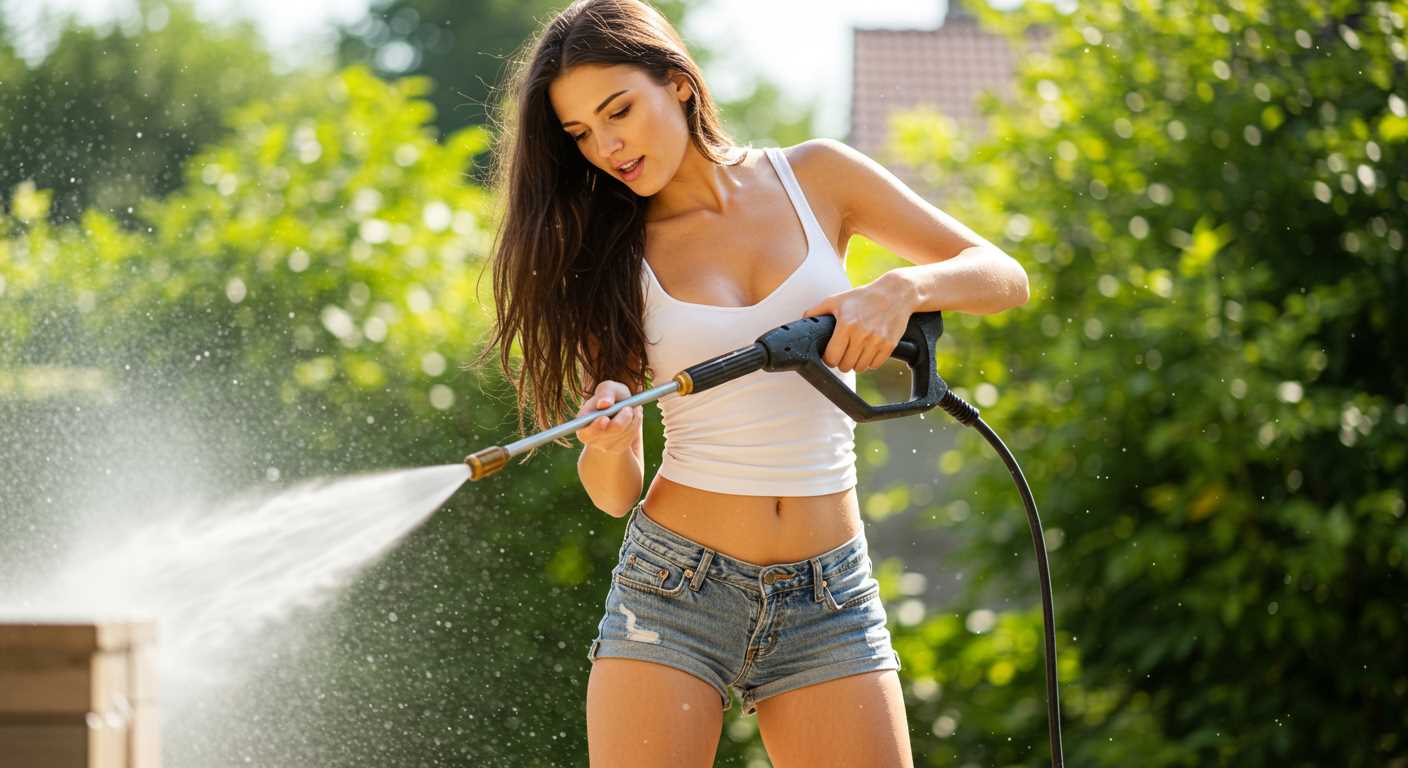




For those seeking a robust cleaning solution, I recommend focusing on models with a minimum pressure rating of 2000 PSI and a flow rate around 2.5 GPM. This combination will effectively tackle stubborn dirt and grime on various surfaces, from patios to vehicles. During my years in the industry, I consistently found that products meeting these specifications deliver the most satisfying results, whether for residential or light commercial use.
It’s also crucial to consider the power source. Electric variants are quieter and easier to maintain, making them ideal for home use. However, if you require mobility and versatility, gas-powered machines are your best bet. I recall a client who switched from electric to gas; it transformed their cleaning routine, allowing them to easily handle large outdoor spaces without the hassle of extension cords.
Don’t overlook the importance of accessories. A rotating brush or a turbo nozzle can drastically enhance cleaning performance. I once had a customer who was sceptical about additional attachments, but after trying a turbo nozzle, they were amazed at how much quicker they could complete their tasks. The right attachments can turn a standard model into a powerhouse, suited for a variety of cleaning projects.
Finally, ensure you choose equipment with a reputable warranty and customer support. I’ve seen too many individuals regret their purchase simply because they opted for a lesser-known brand without adequate backup. Investing in a well-supported product pays off in the long run, providing peace of mind and reliability.
Choosing the Right Cleaning Equipment
For any cleaning project, I always recommend considering the intended use first. If you’re tackling heavy-duty tasks like stripping paint or cleaning large surfaces, opt for a model with a high flow rate, typically around 8-10 litres per minute. This ensures you have enough water pressure to effectively remove stubborn dirt and grime.
Assessing Power Needs
When I was testing various models, I found that electric units often suit smaller jobs, while gas-powered machines excel in more demanding scenarios. If you plan to use the device for residential tasks like washing cars or patios, an electric model with a pressure range of 1300-2000 PSI will suffice. For commercial use or larger properties, aim for a gas model providing 3000 PSI or higher.
Consider Portability and Storage
In my experience, weight and size matter significantly. If you’re frequently moving the equipment around, look for lightweight options with sturdy wheels. I remember struggling with a heavy unit during a job–having a compact design makes a world of difference. Also, check for onboard storage for nozzles and hoses to keep everything organised.
Understanding Pressure Washer Types
Choosing the right equipment starts with knowing the different types available. Each model has its own strengths, and understanding these can make a significant difference in your cleaning tasks.
Electric vs. Gas Models
Electric units are perfect for light to medium jobs. They are quieter, easier to store, and require less maintenance. I remember using an electric model to clean my patio furniture; it was light enough to move around easily, and the job was done in no time. However, for heavy-duty tasks, like stripping paint or cleaning large driveways, gas-powered machines are more suitable. They pack more power, and I found them invaluable during a project at a friend’s house, where we tackled a heavily soiled garage floor.
Cold vs. Hot Water Units
Cold water types handle most cleaning tasks effectively. However, if you’re dealing with oil stains or grease, hot water variants can be a real lifesaver. I once had to clean a commercial kitchen’s exterior; the hot water option cut through the grime like butter. Investing in a hot water model can save you time and effort for specific applications.
| Type | Best For | Pros | Cons |
|---|---|---|---|
| Electric | Light to medium tasks | Quiet, low maintenance | Limited power |
| Gas | Heavy-duty tasks | High power, durability | Louder, more maintenance |
| Cold Water | General cleaning | Effective for most jobs | Less effective on grease |
| Hot Water | Grease and oil stains | Powerful cleaning | Higher cost, more complex |
Understanding these categories can help you make an informed decision tailored to your specific needs. Whether you opt for electric, gas, cold, or hot models, knowing the differences will guide you to the right choice for any cleaning project.
Identifying Your Cleaning Needs
To choose the right equipment for your cleaning tasks, determine the specific surfaces and levels of grime you will tackle. This clarity will guide your decision-making process effectively.
Assessing Surfaces
- Concrete: For driveways and patios, a model with at least 2000 PSI is advisable. Stains like oil or rust require a robust machine.
- Wood: If working on decks or fences, opt for lower pressure (around 1500-1800 PSI) to avoid damage.
- Vehicles: A gentle approach (1200-1900 PSI) is best for cars and motorcycles to prevent scratches.
- Vinyl siding: Choose a unit with a pressure range of 1200-2000 PSI to effectively clean without harming the material.
Understanding Grime Types
- Light dirt: A lower-pressure option suffices for routine cleaning tasks.
- Stubborn stains: For grease or mildew, look for equipment capable of utilising detergents, which enhances cleaning power.
- Mould and algae: High pressure combined with the right cleaning agents can effectively eliminate these growths.
Evaluate your cleaning tasks carefully. A thoughtful approach ensures you invest in the right equipment that meets your specific needs without overspending or underwhelming yourself in performance.
Comparing Electric vs. Gas Pressure Cleaners
For most tasks, electric models excel in convenience and quieter operation. I remember using an electric cleaner for a small patio job; it was quick to set up and easy to manoeuvre. The lightweight design made it ideal for residential use. With minimal maintenance, these units are perfect for regular cleaning around the home, like washing cars or cleaning decks. They usually produce around 1500 to 2000 PSI, sufficient for most light to moderate jobs.
On the flip side, gas-powered machines shine in heavy-duty applications. When I tackled a stubborn oil stain on a commercial driveway, a gas model was the only choice. The power these units deliver–often exceeding 3000 PSI–makes them suitable for intense cleaning tasks and large areas. However, they come with the trade-off of more noise and emissions, which can be a concern in residential areas. Regular maintenance is necessary, including oil changes and spark plug replacements, which adds to the overall ownership cost.
Performance and Portability
Electric devices are typically lighter and easier to transport. I’ve carried them around my garden effortlessly. The corded nature can be limiting, but using an extension cord helps to reach distant areas without hassle. Gas-powered cleaners, while powerful, require more effort to move around due to their weight and the need to manage fuel. For those who need mobility without sacrificing power, consider a gas unit with wheels designed for easy transport.
Cost and Long-term Value
Electric models generally have a lower upfront cost, making them appealing for casual users. After years of testing, I found that many electric machines can last several years with proper care. Gas models, while pricier initially, often offer greater longevity and resilience under tough conditions. If you plan to use it frequently for heavy tasks, investing in a gas variant may be more economical in the long run.
Evaluating Pressure Ratings and Flow Rates
For effective cleaning, focus on two key specifications: pressure ratings, measured in PSI (pounds per square inch), and flow rates, indicated in GPM (gallons per minute). A unit with a pressure rating of 1500-3000 PSI is suitable for most domestic tasks. For tough grime, consider models that exceed 3000 PSI. In my experience, exceeding 4000 PSI is ideal for heavy-duty applications like removing paint or cleaning concrete.
Flow rate complements pressure. A higher GPM means faster cleaning, as it enables more water to wash away dirt. For typical household chores, a flow rate between 1.5 to 2.5 GPM suffices. If you’re tackling larger surfaces, such as driveways or decks, aim for at least 2.5 GPM. I remember using a 3.0 GPM unit to clean my patio, and it halved the time compared to lower-flow models.
Always match the PSI and GPM to your cleaning requirements. For vehicles, an automotive pressure washer with around 1900 PSI and 1.5 GPM works wonders without risking damage to the paint. Testing various combinations in real-life situations has taught me that finding the right balance can significantly enhance efficiency and results.
In summary, assess your tasks and choose a machine that fits both pressure and flow needs. This approach not only optimises performance but also saves time and effort during cleaning tasks.
Considering Portability and Storage Options
When choosing a cleaning system, portability and storage can significantly impact your user experience. From my years of testing various models, I found that lightweight designs can make a world of difference, especially if you need to move the unit around your property or transport it in a vehicle.
Key Features to Look For
- Weight: Aim for a model that is easy to lift and manoeuvre. Many compact versions weigh under 20 kg, making them ideal for home use.
- Wheels: Larger, sturdy wheels improve mobility over uneven terrain. Look for units with rubber wheels for better grip.
- Handle Design: An adjustable or foldable handle can enhance portability. I’ve encountered models where the handle retracts completely, making storage a breeze.
Storage Solutions
Storage is often overlooked, yet it can save you time and hassle. After trying various designs, I recommend looking for features that facilitate easy organisation:
- Cord Storage: A designated space for the power cable prevents tangling and damage.
- Accessory Holders: Built-in storage for nozzles and wands keeps everything together. I’ve used machines with clips that securely hold accessories, reducing clutter.
- Compact Design: Models that can be stored upright or have a small footprint are easier to tuck away in garages or sheds.
In my experience, prioritising these aspects can lead to a more enjoyable and efficient cleaning process. The right choice not only enhances mobility but also simplifies storage, allowing you to focus on your tasks rather than equipment management.
Examining Available Accessories and Attachments
Investing in additional tools can significantly enhance your cleaning capabilities. In my decade of experience, I’ve found that the right accessories can transform an ordinary unit into a versatile cleaning machine. For instance, consider a rotating brush attachment. This tool is particularly effective for tackling stubborn grime on surfaces like patios and driveways. I remember the time I used one to clean an old, stained concrete slab; the results were astounding.
Another must-have is a surface cleaner attachment. This is excellent for large flat areas, providing an even clean without the risk of streaking. I once worked on a commercial project where time was of the essence. Using a surface cleaner shaved hours off our cleaning time, allowing us to meet deadlines easily.
Don’t overlook nozzle options. Different spray patterns–ranging from a wide fan to a concentrated jet–are vital for various tasks. For delicate surfaces, such as car paint, a wider spray is kinder, while stubborn stains on brick might require a more focused stream. Experimenting with these nozzles has saved me from damaging surfaces more times than I can count.
If you often clean outdoor furniture or vehicles, consider a detergent tank or foam cannon. These attachments can create a thick layer of foam that clings to surfaces, breaking down dirt and grime effectively. I recall a summer day spent washing my car with a foam cannon; the experience was not only fun but left my vehicle sparkling clean with minimal effort.
Lastly, think about extension wands. These can help you reach high places without the need for ladders, which I found invaluable when cleaning gutters or second-storey windows. It makes those hard-to-reach spots accessible and safer.
Overall, investing in the right accessories and attachments not only enhances the performance of your equipment but also makes the cleaning experience more efficient and enjoyable. Choose wisely based on your specific tasks, and you’ll find yourself achieving remarkable results with ease.
Reviewing Brand Reputation and Customer Feedback
Consider brands that have established a solid reputation over time. I’ve found that companies with a long history in the cleaning equipment market tend to offer more reliable products. For instance, brands like Kärcher and Ryobi often receive positive reviews due to their commitment to quality and customer support.
Look closely at customer feedback across various platforms. Websites like Amazon and dedicated review sites can provide insights into real-world performance. Pay attention to recurring themes in the reviews; issues with durability or customer service often appear in negative reviews, which can be red flags.
During my years in the field, I witnessed how customer feedback can influence brand reputation. For example, one year, a well-known brand released a model that initially received rave reviews. However, after several months, users reported significant performance issues. This shift in customer sentiment led to a noticeable decline in sales for that model, and the brand had to act quickly to address the problems and regain trust.
Take the time to compare ratings across different models from the same manufacturer. A high-rated model can sometimes overshadow lower-performing variants from the same line. I’ve seen instances where a brand’s entry-level version had better reviews than a more expensive option, simply because it met users’ needs more effectively.
| Brand | Average Customer Rating | Common Feedback |
|---|---|---|
| Kärcher | 4.5/5 | Reliable, powerful, excellent customer service |
| Ryobi | 4.3/5 | Good value, versatile, issues with durability |
| Sun Joe | 4.1/5 | Lightweight, effective for small jobs, limited power |
| Generac | 4.0/5 | Strong performance, heavy, customer service concerns |
Engage with online communities, such as forums or social media groups. Fellow users can share experiences that are not always captured in formal reviews. I once learned about a specific attachment that transformed a basic model into a powerhouse through a discussion in a forum. These insights can help you make an informed choice.
Lastly, don’t ignore warranty and service options. A brand that stands behind its products with a solid warranty often indicates confidence in its quality. I recall a situation where a friend had a problem with his equipment just outside the warranty period, and the manufacturer offered a discount on a replacement, which speaks volumes about their customer care.
Assessing Warranty and Service Support
Before making a commitment, evaluate the warranty and service options provided by the manufacturer. A solid warranty can indicate the company’s confidence in their product. I recall a situation where I recommended a model with a three-year warranty. A friend faced issues after a year, but the swift service support turned out to be a lifesaver. They replaced the faulty unit within days, showcasing the brand’s reliability.
Understanding Warranty Terms
Look for warranties that cover not just parts but also labour. Some brands offer extended warranties for a nominal fee, which can be worth considering if you plan to use the equipment frequently. I once overlooked this detail and ended up spending more on repairs than I would have on an extended warranty. Read the fine print; some warranties exclude certain components, which might leave you at a loss.
Service Network and Availability
Investigate the service network of the chosen brand. A manufacturer with a robust service network makes it easier to get support when needed. In my experience, brands with local service centres often provide quicker turnaround times. Additionally, check online reviews for customer feedback regarding their service experiences. I’ve seen brands that excel in product quality but falter in customer support, leading to frustration for users. It’s best to avoid those when possible.
Lastly, remember to consider the availability of replacement parts. Some models might be cheap initially but can turn costly if parts are hard to find. For instance, I once had a model where the pump broke down, and sourcing a replacement took weeks. This could have been avoided with a bit of research beforehand. Always ensure the support system aligns with your expectations to keep your cleaning tasks smooth and hassle-free. And while you’re at it, if you have an aquarium, check out this guide on how to clean an aquarium air stone to keep your aquatic friends happy!
Setting a Budget for Your Pressure Washer Purchase
Establishing a budget is critical before diving into the world of high-pressure cleaning equipment. From my years in the industry, I’ve seen customers make the mistake of not defining their financial limits first, which often leads to overspending or purchasing models that don’t fit their needs.
Consider these key points when determining your spending range:
- Entry-level models: If you’re tackling light tasks like washing cars or patio furniture, you can find reliable electric units starting around £100 to £200. These machines provide ample power for light to moderate cleaning.
- Mid-range options: For more demanding jobs, such as cleaning driveways or decks, expect to invest between £200 and £400. Gas-powered machines in this range deliver higher pressure and flow rates, allowing for quicker and more efficient cleaning.
- Professional-grade equipment: If your needs are more intensive, like commercial cleaning services, be prepared to spend £400 and up. These units boast superior performance, durability, and often come with advanced features and accessories.
Additionally, think about the following:
- Operational costs: Factor in the cost of electricity or fuel, as well as maintenance essentials. Gas machines typically incur more ongoing expenses compared to electric counterparts.
- Accessories and attachments: Some models come bare-bones, while others include a variety of nozzles and brushes. Budgeting for these extras can enhance your cleaning experience significantly.
- Warranty and service: A model with a robust warranty might cost more upfront but can save you money in the long run by covering any potential repairs.
In my experience, setting a realistic budget not only helps you narrow down your options but also ensures you invest in a machine that meets your specific cleaning needs without breaking the bank. Remember, the right balance between price and performance is key to a satisfying purchase.








.jpg)


